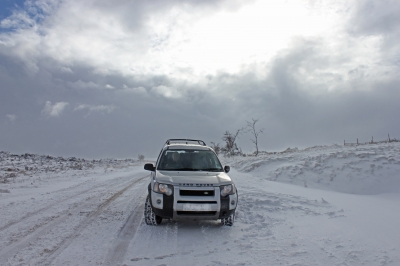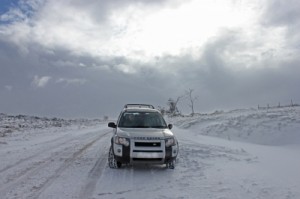Autos
Making Your Car Winter-Ready

Winter can be especially harsh on your car; it also presents the most treacherous driving conditions. By being proactive and preparing your vehicle, you can protect it, and yourself, from the potential dangers of this season. Here are a few things you should be doing to get your car ready for winter.

Get on Track with Regular Maintenance
If you fell behind on caring for your car during the warm days of spring and fun days of summer, now is the time to get back on track. Before the bad weather hits, get up to date with routine maintenance. If you missed your 60,000 mile tune-up, get on that. Check, change or top-off the oil, the brake, coolant and/ or transmission fluids. Coolant should be a mix of 50 percent water and 50 percent anti-freeze; any less anti-freeze and you risk having your engine freeze up. If you are not sure of the ratio, you can buy a cheap antifreeze tester at an auto parts store. Check tire pressure; get new tires if necessary. Check the brakes, lights and windshield wipers, which should be replaced if they are more than six months old. Get freeze-resistant washer fluid.
Check Your Battery
The last thing you want to have happen in the middle of the freezing cold and nasty weather is a car that won’t start because the battery is dead. Look at the connections to ensure they are not experiencing corrosion. If the battery is more than three years old, have your mechanic check if it can still hold a charge. To be on the safe side, you may just consider getting a brand new one.
Tires
Tires are often the most neglected aspect of a car—we tend not to pay them much mind until they burst or are so worn down, we have no choice but to change them. But, if you want to keep yourself safe in the winter, you should give them the attention they deserve. Check that the pressure is at the manufacturer’s recommended levels. Not only will it make the car safer to drive, you will improve fuel efficiency. If you live in an area that warrants it, consider springing for snow tires, which can stop 40 percent faster than regular tires; also, they are made from a type of rubber that allows the tires to maintain flexibility even in colder weather.
Check the Coolant System
Besides checking coolant fluid levels, which falls under routine maintenance, you should check the whole coolant system as winter approaches. If any one part is not up to speed, it can compromise the whole system. Check the radiator pressure and look to see if the hoses have any cracks or bulges. If your water pump has more miles than recommended by the manufacturer, you should get it replaced; getting a new thermometer while you are at it—it will be cheaper to get it done at the same time as the water pump than if you do it separately down the line.
Kelli Cooper is a freelance writer who blogs about a variety of auto topics from maintenance to insurance; if you are looking for car insurance in Canada, check out Kanetix to compare quotes from a variety of carriers.
Photo Credit
-

 Tech11 years ago
Tech11 years agoCreating An e-Commerce Website
-

 Tech11 years ago
Tech11 years agoDesign Template Guidelines For Mobile Apps
-

 Business6 years ago
Business6 years agoWhat Is AdsSupply? A Comprehensive Review
-

 Business10 years ago
Business10 years agoThe Key Types Of Brochure Printing Services
-

 Tech8 years ago
Tech8 years agoWhen To Send Your Bulk Messages?
-

 Tech5 years ago
Tech5 years ago5 Link Building Strategies You Can Apply For Local SEO
-

 Law5 years ago
Law5 years agoHow Can A Divorce Lawyer Help You Get Through Divorce?
-

 Home Improvement6 years ago
Home Improvement6 years agoHоw tо Kеер Antѕ Out оf Yоur Kitсhеn































